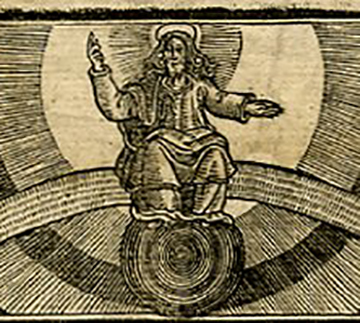The Examinations of Elizabeth Young
"This woman was one Elizabeth Young, who coming from Emden to England, brought with her divers bookes, and sparsed them abroad in London" - John Foxe from Elizabeth Young's introduction.
Elizabeth Young was taken into custody for selling anti-Catholic texts during the reign of Queen Mary and “examined” for information. Of her thirteen interrogations, nine appear in Foxe’s definitive account of martyrdom during this time, the Acts and Monuments. Interestingly, “Young’s story appeared for the first time in the second edition of the Book of Martyrs,” which suggests that her examinations came to Foxe after the success of his first edition of the text (Geng 674). Young is a fascinating figure; not only is she “forthright, articulate, sharp-witted, and well-informed about her faith,” she also “stands up to so many repeated interrogations that she goes through a remarkable number of examiners” (Mullaney 245). Throughout her examinations, she often switches to a tone of innocence and simplicity to trick her questioners, while subtly mocking and overturning their patriarchal assumptions of her. Perhaps most surprising of all, unlike most other Protestant women in the text, she is not martyred at the end of her story.
Young's nine examinations take up a considerable amount of expensive printing space in a text mostly dominated by men; in light of this, the lack of scholarship devoted to Young is surprising. When looking into her examinations, one discovers that despite her low societal status, Young is viciously witty, and her intellect actively disrupts the patriarchal assumptions of her questioners. While some research has been devoted to these examinations, much of this work discusses Young only briefly, and in connection to other women in the text. For instance, Penelope Geng focuses on Young’s examinations only as context for her study of the examinations of Anne Askew. Other research on Young discusses her theological erudition, Foxe’s portrayal of her, and the violent language that her male examiners use against her (Hickerson, Levin, Monta, Robinson). However, once again this research only mentions her in conjunction to other women, merely skimming the surface of these topics, and none give Young’s examinations the depth and detail they deserve.
In the following pages, I will conduct an in-depth exploration of Elizabeth Young and her clever navigation of the restrictions placed upon her. I will explore how Young adopts a simplistic demeanour that fits the patriarchal assumptions of her questioners in order to evade and confuse them. I will also point to some of the instances of sharp erudition that Young displays, which are evidence of keen theological understanding. Young embraces the limitations that are imposed on her, and uses them to her advantage. In doing so, she is able to subtly assert authority and, ultimately, survive her examinations.
Section author: Ellen Graham

